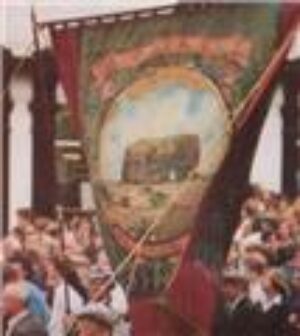Harbour Quarry Quay is a man made cove situated just to the south of Souter Lighthouse. It is known as the Wharry pronounced locally as the ‘War-‘ry’. Quarrying of limestone has taken place at Marsden for many years. Being so remote with no suitable roads in and out of the area, the quarrymen used their expertise to blast out a small harbour from the natural coastline so they could transport the limestone by sea. The type of boats used to ferry the limestone along the coast were called Wherries, no doubt this is how Harbour Quarry Quay became known locally as the Wharry.
The Tyne Wherries were general purpose barge like vessels used to carry both raw materials and finished goods along the river. Strings of wherries could be towed by paddle – tugs. Later in the nineteenth century they became self propelled using small vertical boilers and steam engines. Wherries were typically fifty feet in length and twenty feet beam and thirty five to forty tonnage. They were massively built to withstand being crushed in the crowded river and regular groundings with the falling tides. This type of hardy vessel was ideal for the Harbour Quay as the vessels were brought in and beached at low water. They were then loaded with limestone and refloated on the high tide.
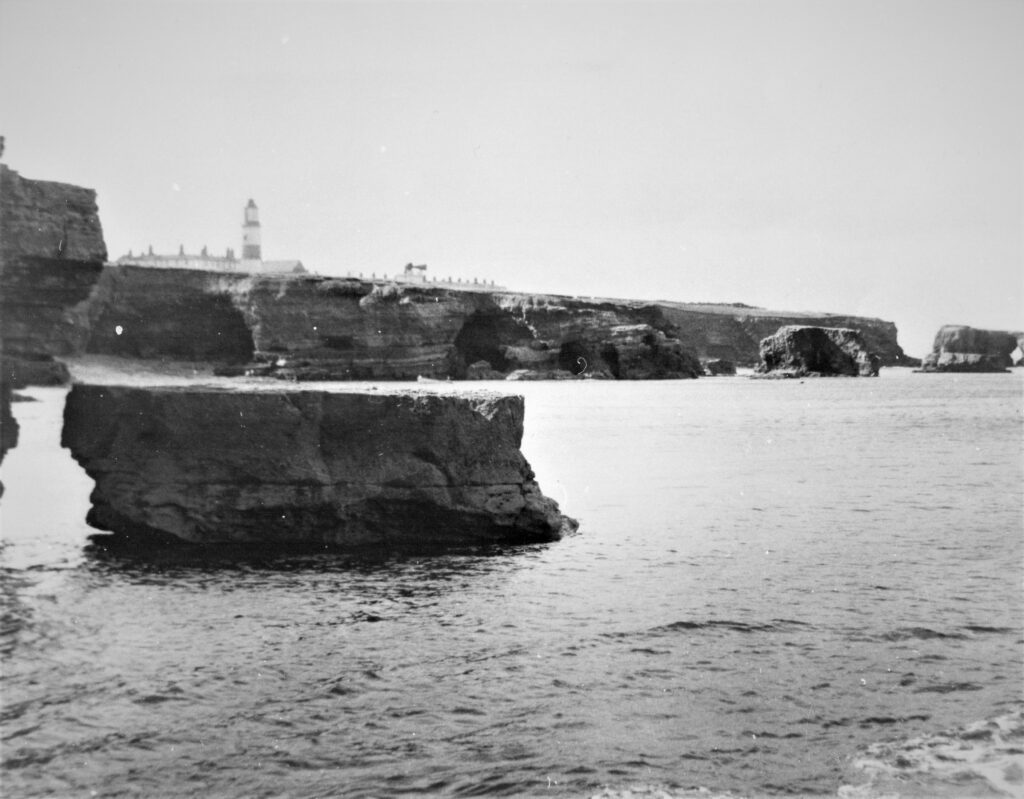
When the Whitburn Coal Company began sinking Marsden colliery they purchased the 5 quarries operating in the area. The biggest was Harbour Quarry this one would have been essential to the coal company. Until the railway was built and road links improved the only way of bringing in heavy materials and plant would have been by the sea. For example the metal of the tubbing supplied by the Elswick Ordnance Works for the shaft linings, would have been loaded onto wherries at Elswick brought down the Tyne and along the coast to Harbour Quay and unloaded within 400 yards of their proposed use.
With the completion of the colliery railway in 1879 strategically Harbour Quay became less important and was eventually obsolete for industrial use.
Once obsolete the folks of Marsden Village took over and used the Wharry for recreational purposes. The bay was split in two by the Quay, the North side was known as the Lads War-ry and the South side as the Lassies War-ry. The men fished and landed their boats from the North side , whilst the women picnicked with the children on the South side. The Wharry had a unique smell, the odour of sulphur coming from the burning pit heap mixed with smell of the washed up seaweed and fish.
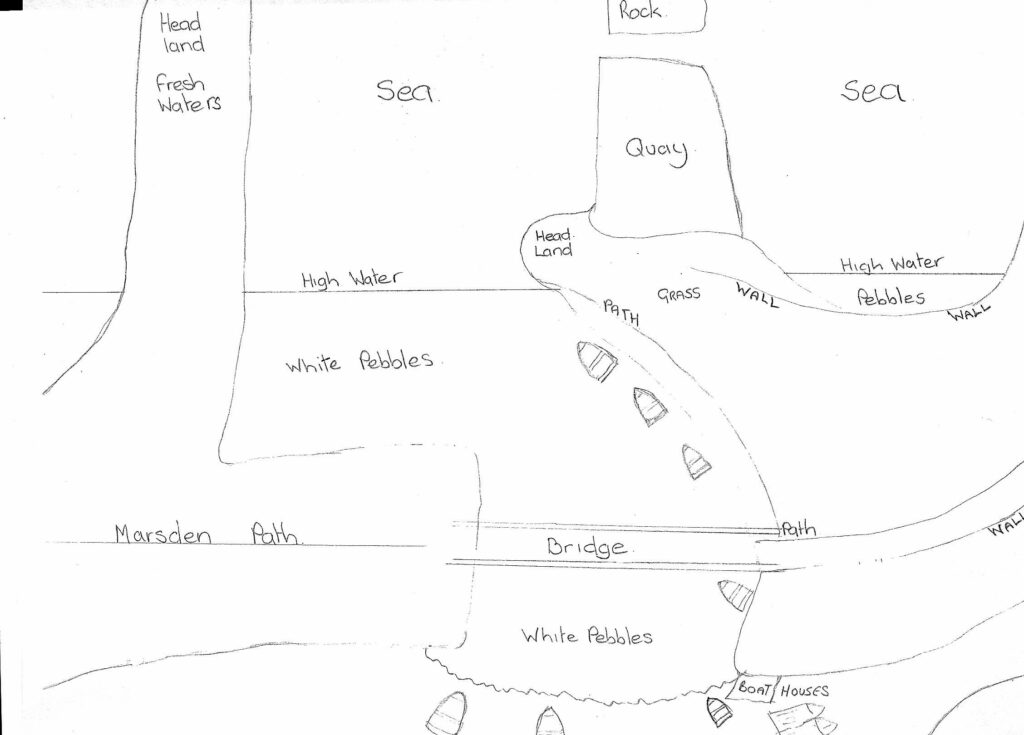
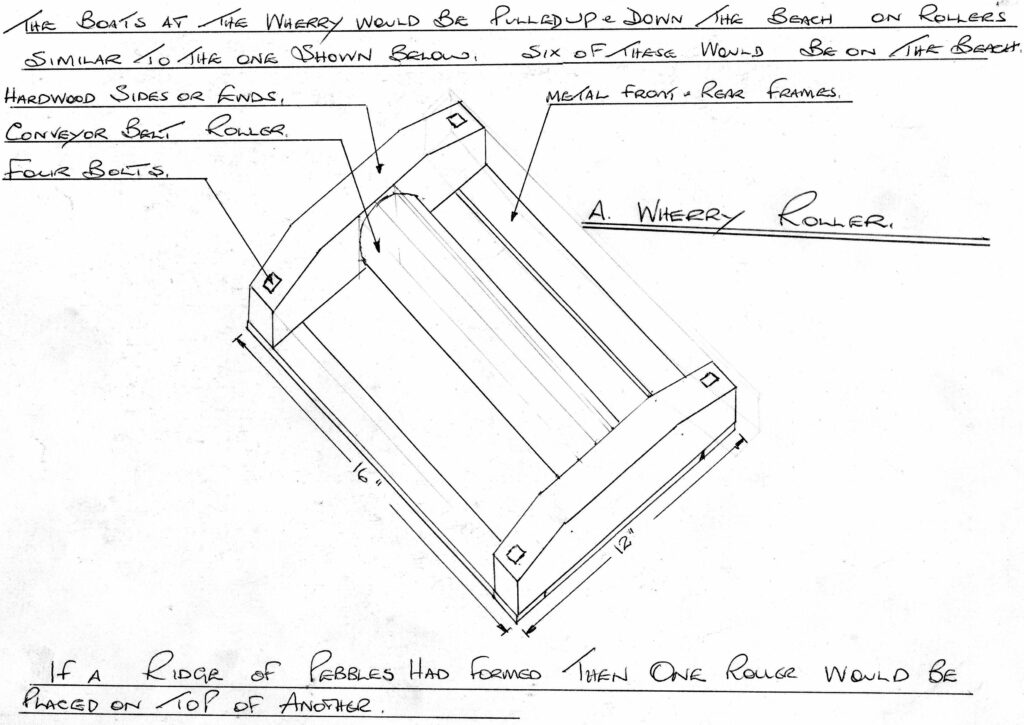

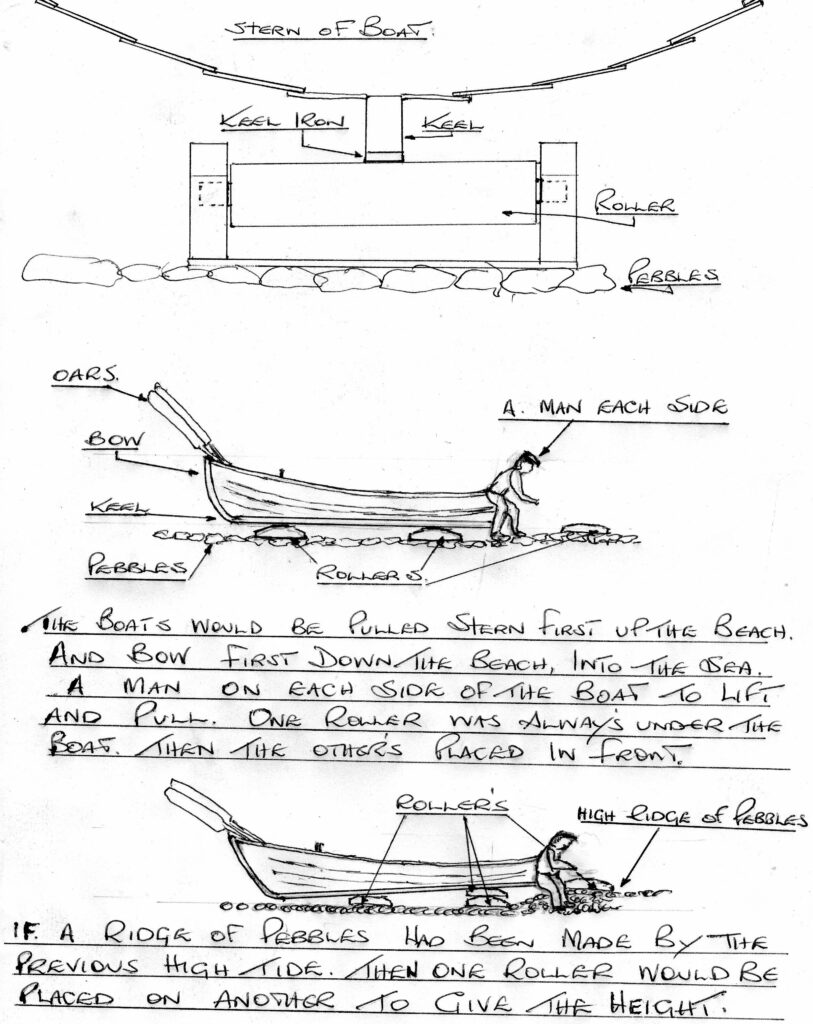
Scores of young lads learned their fishing and boating skills at the Wharry passed down from generation to generation.
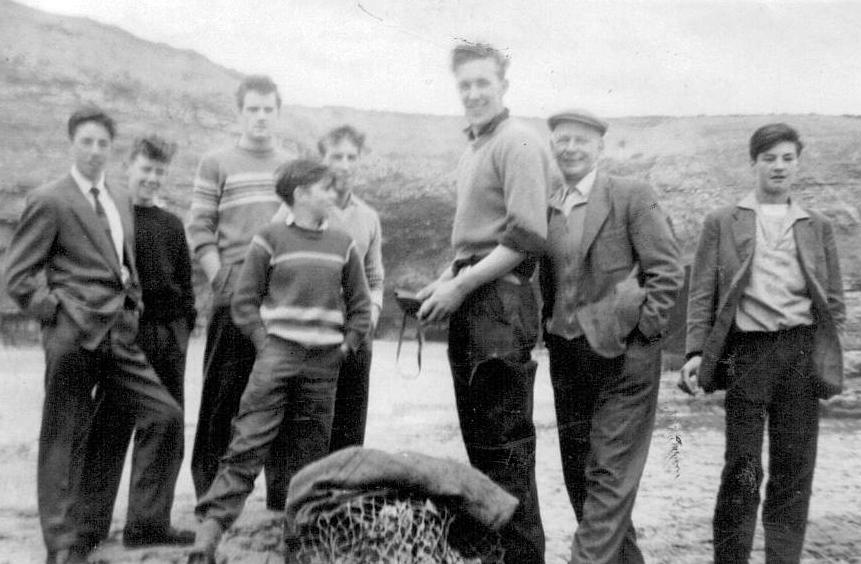
– 8 Derek Cauwood
Today the Wharry no longer functions as a fishing base the last of the little boats long gone and with it a way of life. Reclamation of the pit spoil heap and the creation of the Whitburn coastal park changed the profile of Wharry forever.
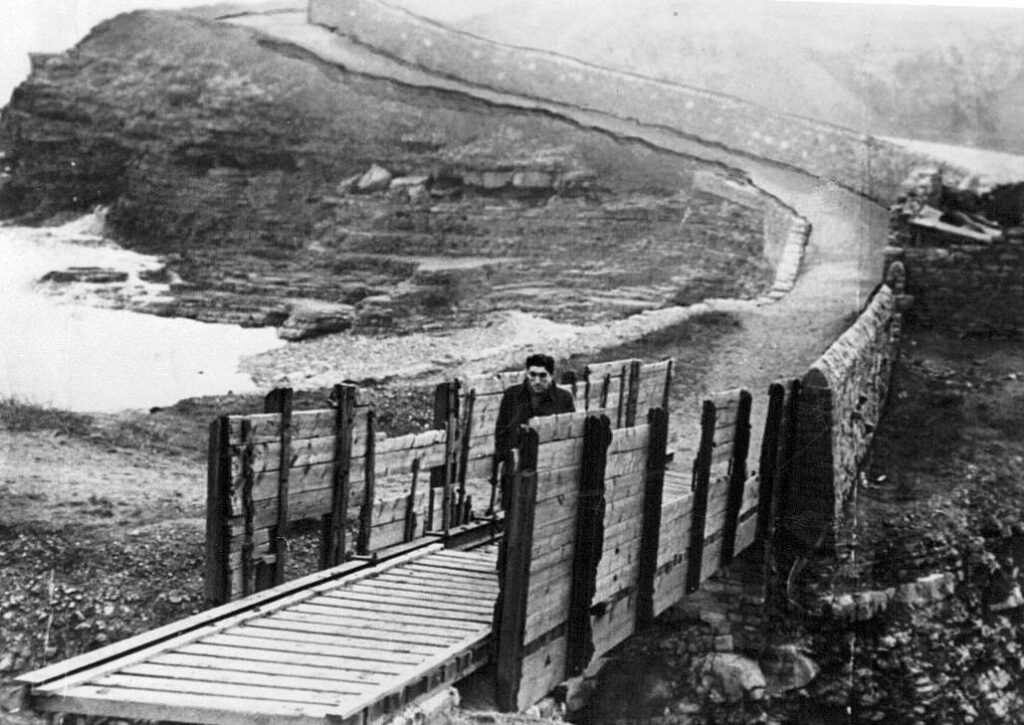
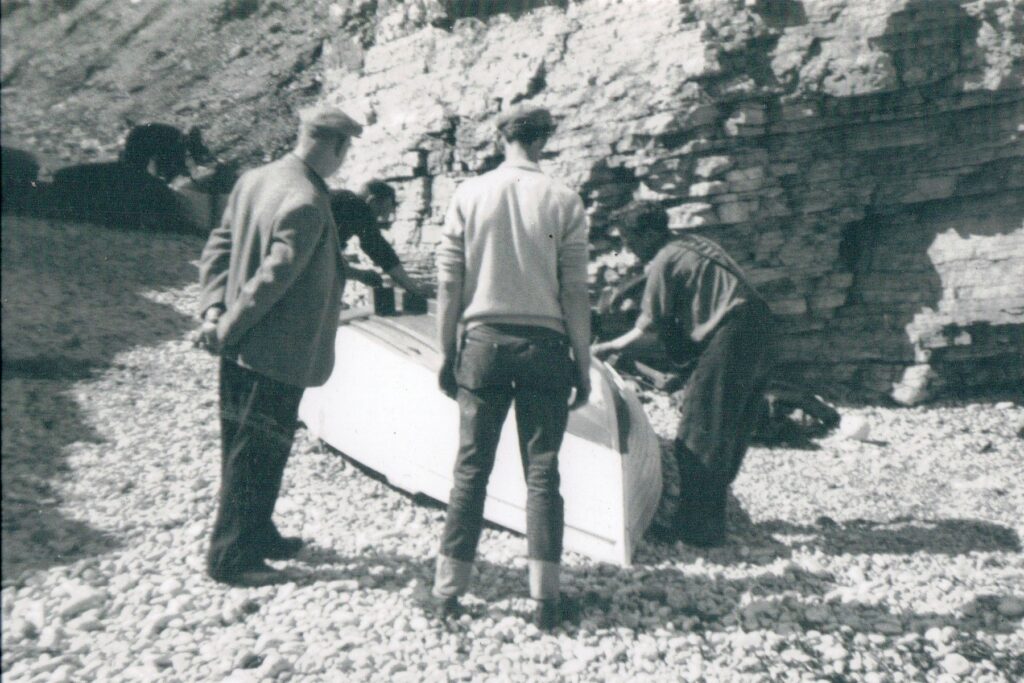
Kathleen says: In this photo of the Wharry you can see a boat called the Nancy it was built by my dad Ralph Ray. It was sold to Big Hutcha who later sold to Darky Nunn who called it Eva but later changed the name Kathleen after his daughter. My dad Ralph is painting and my uncle Ronnie caulking.They had just extended the back of the boat to accommodate a salmon net.
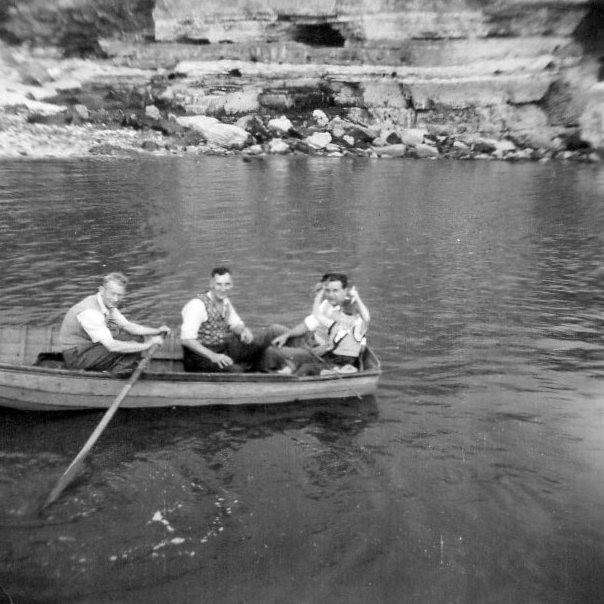
Probably the last group of lads to learn their knowledge at the War-ry was in the 1960’s they included a young Derek Wilson. The following account is based on Derek’s recollections.
The summer holidays had arrived for three 14 year old boys, Phillip Johnson, Dave Lockey and myself, and we were looking forward to three or four weeks fishing. For all us young lads the Wharry was a magical place, a place where you could mix with the men of the village and learn the ways of the sea.
At this time there were about eight small boats still operating out of the Wharry, most of the men had boat cabins made from timber and conveyor belting which had magically gone astray from the pit yard. The boats were hauled up and down the pebbly beach using rollers made in the colliery blacksmiths shop from conveyor belt rollers.
As young lads we sat beside the cabins listening with great interest to the stories that were told by the men. Men like, Arthur McDonald, Alby Cauwood, Billy Greaves (Geesy), Jim Nicholson (Jimmy Nica), Jim Robson (Roppa), Mr George (Paki George), Dick Ramsey, Mr Stevens (Curly) and Ted Stephenson all great characters, fishermen first and pitmen second.
At this time I owned my first boat a 12 foot shell-clinker build, built by local boat builders the Ray brothers of Whitburn.
We would fish for cod and mackerel, the mackerel we mainly used for crab and lobster pot bait. I had 20 pots which we hauled and baited each day.
My father had a salmon licence and that summer he added our names to the licence at a cost of 17 shillings and sixpence for the season. We had a salmon net which was approximately 100 yards in length which had a box end on the seaward end. A weight was tied onto the top line of corks this was placed on either on the Wharry Quay or on the North side headland known as Fresh Waters. The nets bottom line had lead weights attached every two yards to hold the net straight in the water. The net would be shot (put out) in the early evening and we would haul it at sun rise the following day. The boat would be rowed up the net with one oar over the net, splashing to scare any fish into the net. The net would be hauled from the box end in, to the fast end on the Quay. Hopefully lobstersand crabs would also be caught in the net as they followed any fish that were trapped.
The hauled wet net, with all the weights and hopefully with a good catch was very heavy and the boat would be well down in the water with probably only six inches of free board remaining between us and being swamped.
Any salmon caught we would sell to the local publicans at the Jolly Sailor or the Grey Horse in Whitburn.
We would camp out at the Wharry sleeping in the caves which had blackened roofs caused by years of camp fires. We would light our fire put an old pan on and boil crabs and lobsters in seawater. Sometimes if we had a good catch of fish we would roast a salmon. Looking back we ate like kings but at the time we didn’t think it was anything out of the ordinary.
One sunny day big Jim Pearson who fished with my father walked into the Wharry asking if we had done well with the salmon whilst he had been away on holiday. I replied yes, but had to admit we had slightly damaged the net. I turned to walk away Mr Pearson shouted “well let’s have a look at the damage” When we stretched the net out a big hole was discovered. Mr Pearson said “you caused the damage now you will learn to repair it“. Five hours later under his tuition we had repaired the net. Something I still remember and can do 47 years on.
When the pit closed the spoil heap was pushed into the Wharry where the cabins stood and boats were kept. The men and boats all disappeared to various places for various reasons and the Wharry would never be the same again.
Derek Wilson 2013
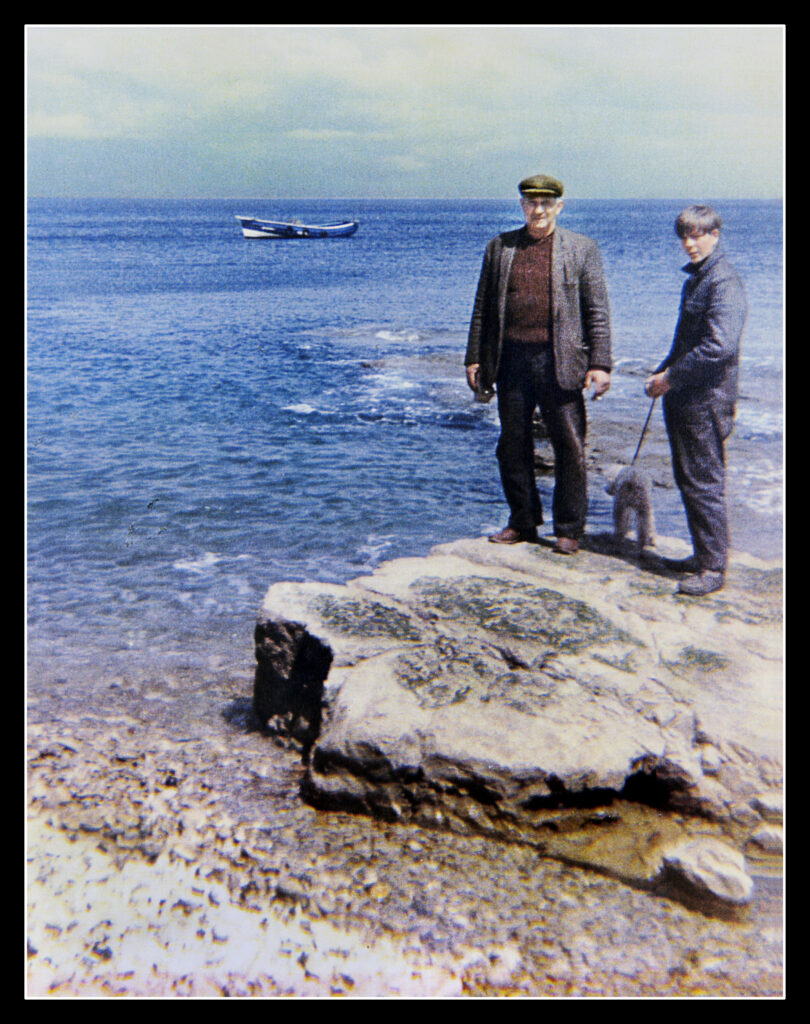
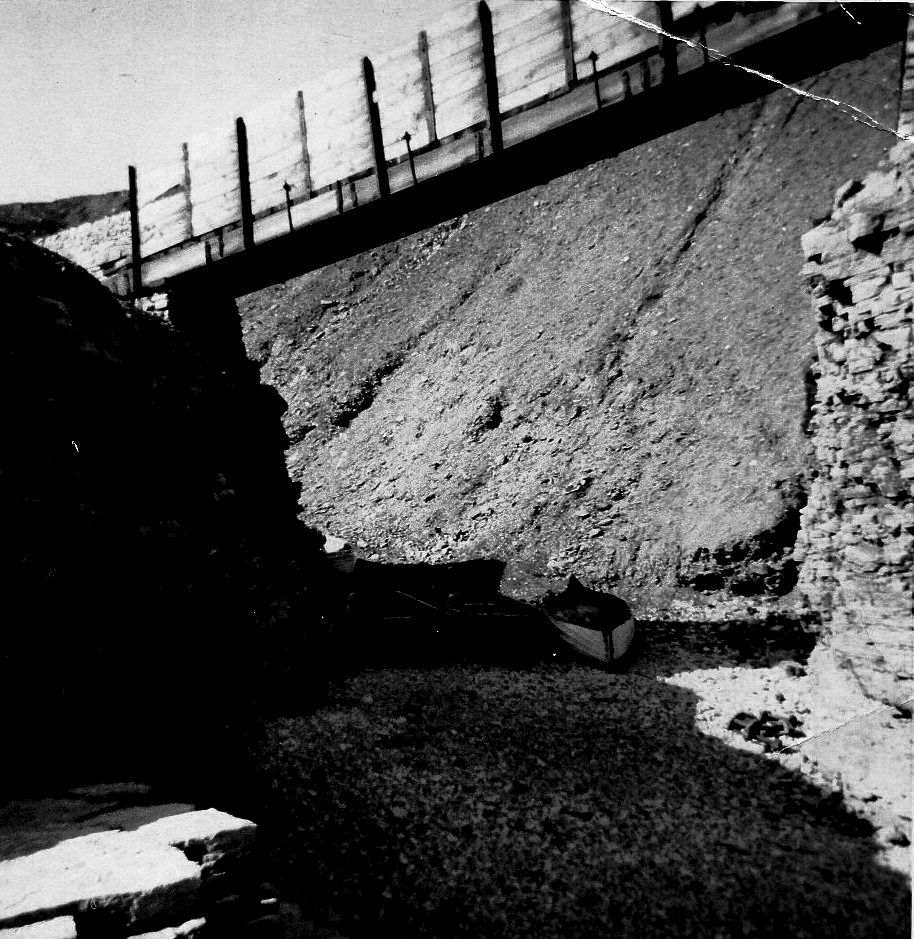
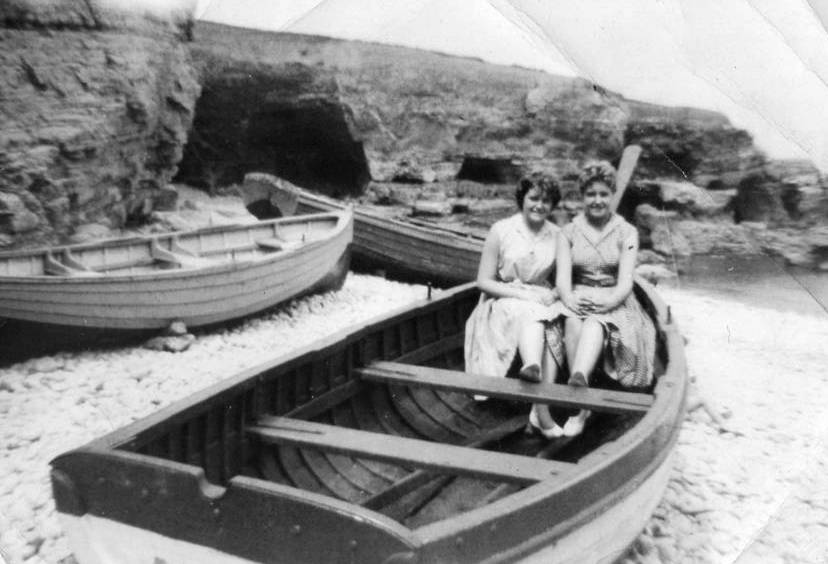
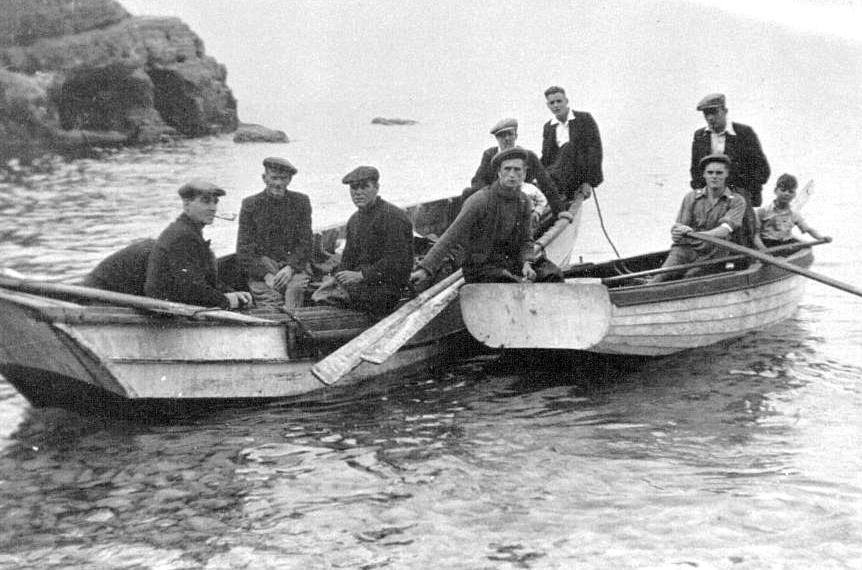
The little boats now long gone;
Standing on the Quay today if you look carefully the last vestiges of the Wharry’s industrial past can still be seen. Evidence of the struts driven into the Quay’s limestone pavement used to support the staithes for the loading and unloading of the Wherry boats are still visible.
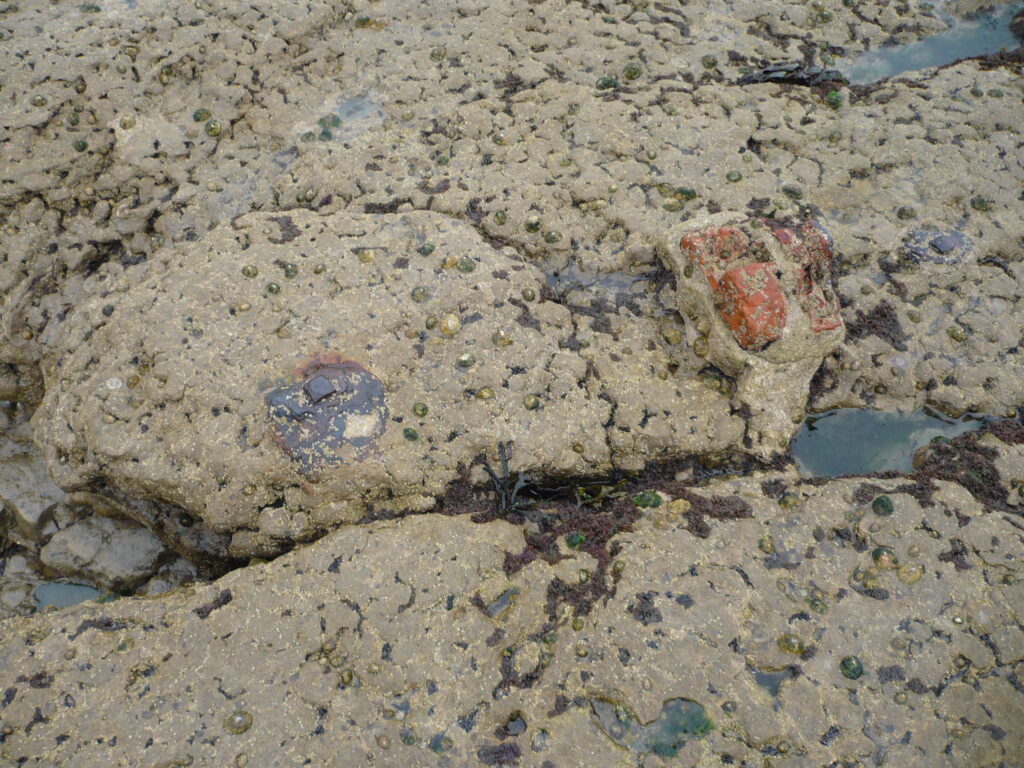
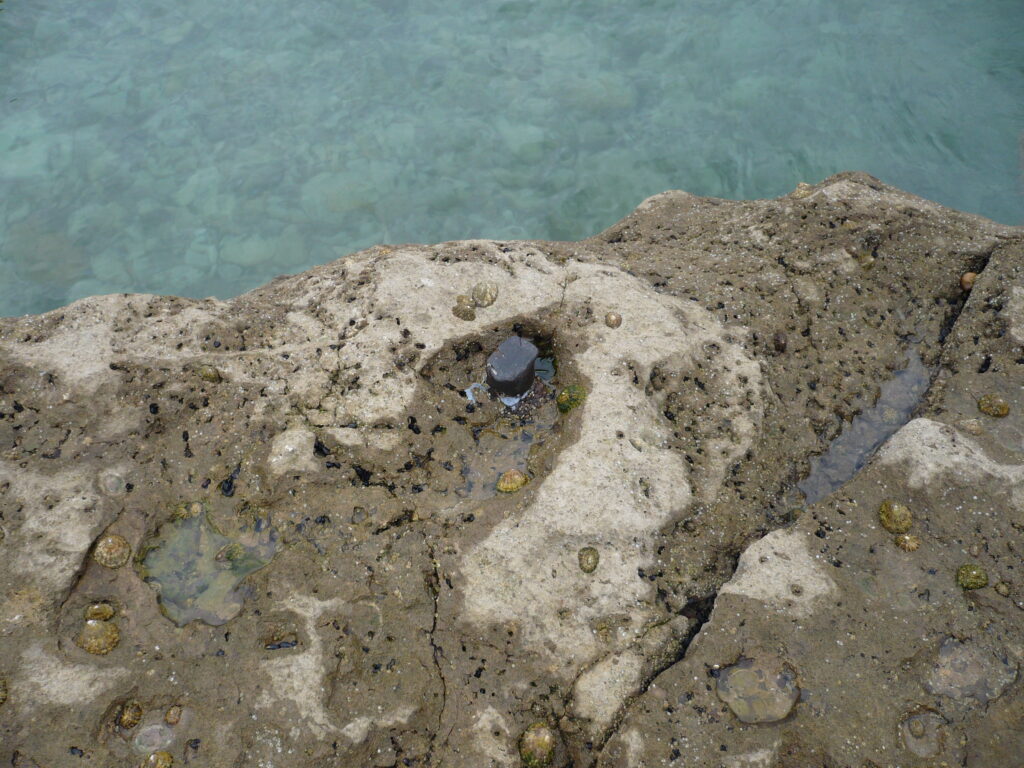
Today the Wharry is managed by the National Trust as part of the Whitburn Coastal Park. School children visiting the nearby Souter Lighthouse still use the Wharry, as the National Trust includes rock pool rambles (tide permitting) as part of their educational package offered to the visiting schools.
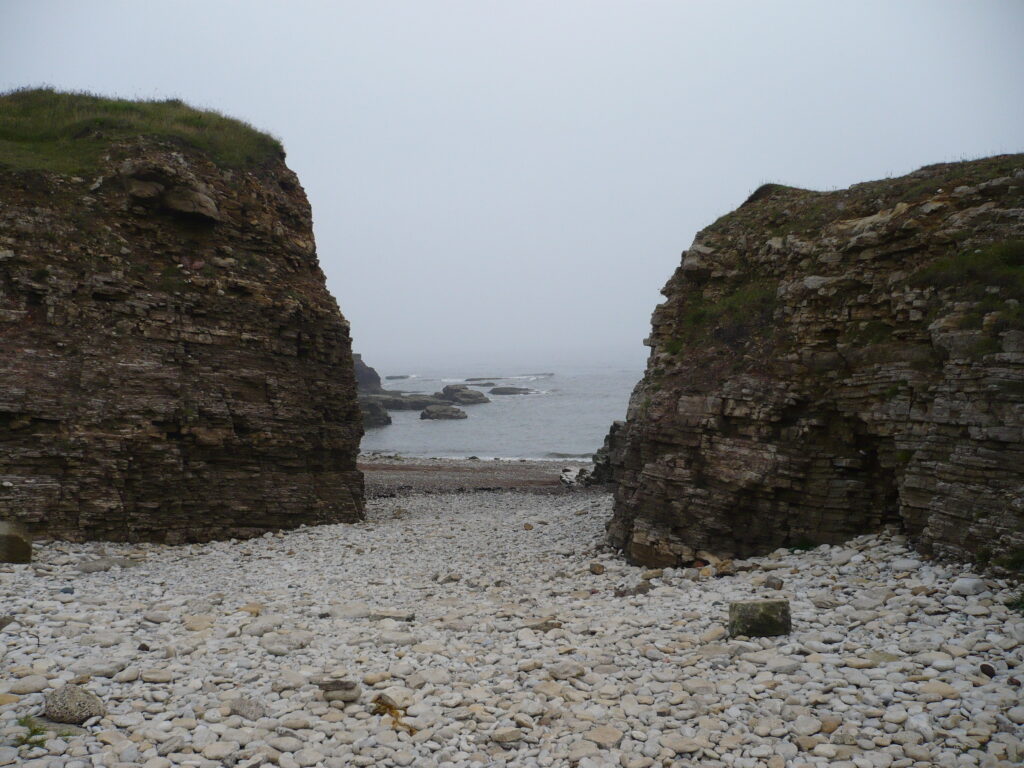
B Cauwood 2013
sources
- Tyne and Wear County Council Museums Service: The Last Tyne Wherry – Elswick No. 2
- website www.nationaltrust.org.uk/souter-lighthouse
sources – 1) Tyne and Wear County Council Museums Service: The Last Tyne Wherry – Elswick No. 2
2) website www.nationaltrust.org.uk/souter-lighthouse
All copyrights acknowledged were known.
Copyright © 2013 Marsden Banner Group.
All rights reserved. Permission granted to reproduce text for educational use only (please cite source).
